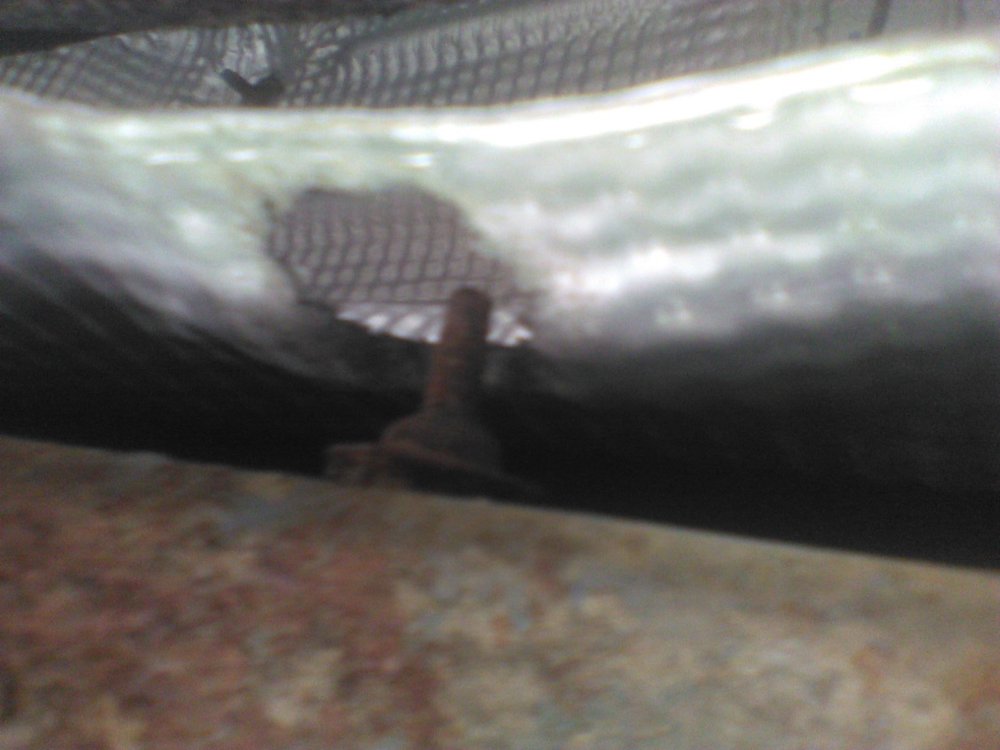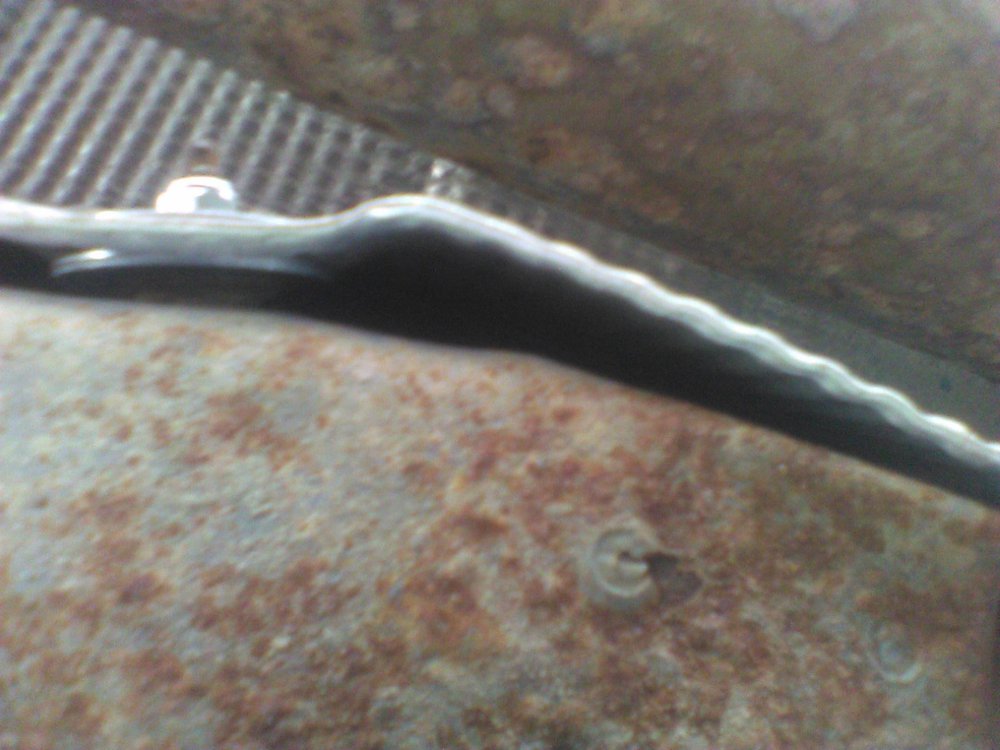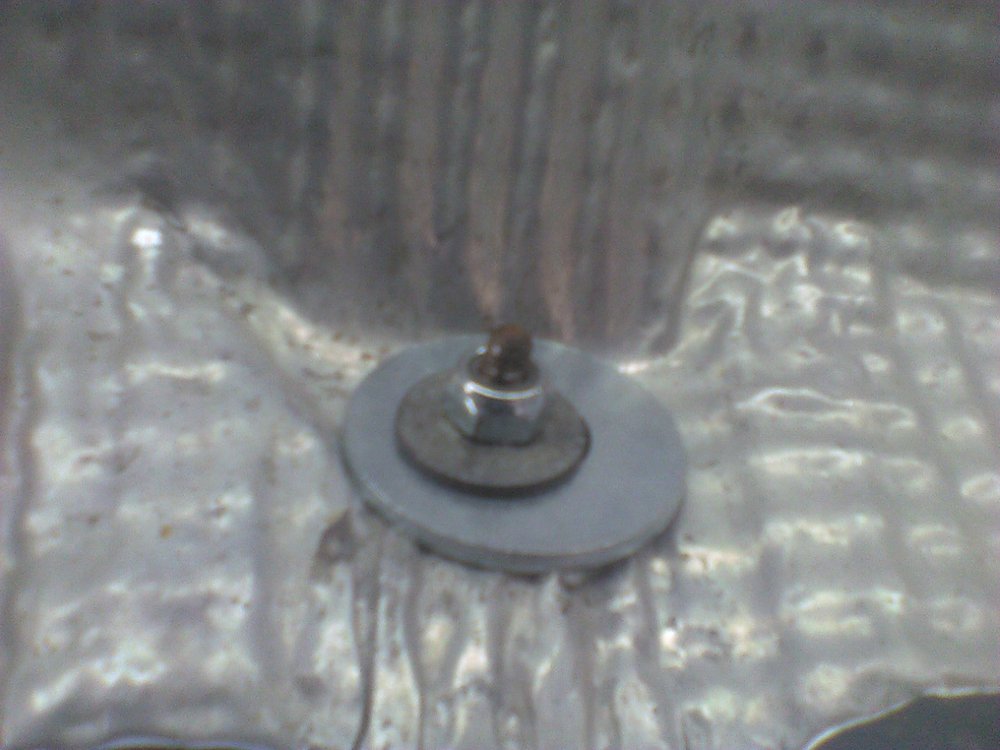
phoenix1151
Journey Member-
Posts
42 -
Joined
-
Last visited
Content Type
Profiles
Forums
Gallery
Everything posted by phoenix1151
-
Thanks for the reply but the part number of the ...302 rf hub is 68066349 (AG), the M3N-40821302 IS the FCC ID number. I just wondered about differences between rf hubs since the mismatch seems to work even though fob sellers say to check the FCC ID of the receiver to make sure you buy the proper fob. I did wiggle the wire connectors on the receiver prior to the battery change so will see how reliable and long-lasting the fob performance is from here forward.
-
We started having typical fob issues over the last couple of months, (won't unlock, fob not detected, etc, both fobs at same time). Rapping the fob on the hand can sometimes get it working eventually so I suspected the battery contacts in the fobs but both having issues at the same time was suspect (might be cheap fob batteries though as others have commented on). I cleaned the contacts and pried the tabs a bit for better contact with the battery but no real improvement. I've read elsewhere that new fobs and even new rf hubs did not solve the issue for others. I decided to at least try buying another fob but checked my rf hub FCC ID first and found M3N-40821703 whereas the fob circuit boards had 28.4082 1302.1 (similar to info from youtube). Looking up the ...703 hub showed it related to a Dodge Charger. The fobs and hub worked fine for years so there must be compatibility but what is the hub difference between ...302 and ...703 ??
-
OK, last entry: I found the rad leak and put in a new rad, tstat and rad cap. Filled, purged and ran it for a couple heat/cool cycles and all seems well. At least I gained some insight to the Journey systems (we bought it used and did not get any booklet or CD). Thanks Dean H for all the info.
-
I conducted an initial block test today, no (major) head gasket leak indicated, a qualified "whew". I'm not 100% convinced as yet but at least it wasn't a definite bomb. The engine heated up normally, the tstat opened fine and the rad fan came on, similar to my previous posted temperature. I moved the tester to the exhaust and after a bit of a delay the fluid did turn yellowish. I purged the tester with clean air and the fluid went back to blue so the test fluid was ok. I'll repeat it again in a week or three. I'm not entirely convinced of anything yet. I'll have to monitor the cold fluid level before/after every trip for a while and see if there is fluid loss and keep an eye on the temp at higher speed (could be the old rad clogging up). As said previously, we did have a small leak somewhere and added Rislone coolant system sealer and it seemed to work well for a couple of months. I started checking the fluid frequently thereafter with no fluid loss shown but I got complacent and then this overheating occured. The amount of coolant I had to add was alarming and this is the first time we've had this trouble.
-
Thanks again Dean H. Results so far, I'm afraid, are pointing to a head gasket leak, but my block test kit has shipped and I'll give it a test when it arrives, 🤢.
-
Couldn't edit previous post, so here's a revised version. Thanks Dean H, good info. I looked up on Mopar site, apparently the whole fan assembly including motor is called "fan module" Part number 68102116AA, over $500 Cdn. I see now how the resistor assembly varies the voltage to the "module" when only the low speed relay is energized and that the high speed relay essentially bypasses the resistor assembly altogether sending full voltage to the module. I expect that the high speed relay is controlled by the ECM but what inputs determine its energization? My having the A/C fuse out wouldn't be mucking things up would it? As far as the A/C goes, I think only high refrigerant pressure is what the ECM looks at to kick in high speed??? I pulled the fuse a while ago so the A/C clutch/compressor wouldn't come on since the system lost its refrigerant quite a while ago. I ordered a Lisle block tester, it will arrive next week, so I'll check the coolant.
-
Thanks Dean H, good info. What is the "fan module - radiator cooling" on the far left of the diagram, what does it do function-wise and where would it be located on the engine? Since the fan started for me the other day I suspect it would be ok on the wifes Journey though. I ordered a Lisle block tester, it will arrive next week, so I'll check the coolant.
-
Has anyone used one of those block tester kits that test for CO2 in the coolant? Any recommendations/warnings on particular brands? If it were to show positive for head gasket leak that would likely be the end of the road for the Journey at this point. I'm trying to not sink much more money into this old buggy, and neither a water pump nor head gasket replacement is cheap.
-
ok, that was a good video but the Journey resistor N1742001 (68054677AA) only has 2 terminals unlike the one used in the video, so circuit arrangement must be different. I'll see if I can find an applicable schematic somewhere. Meanwhile, I took the resistor out, measured 0.8-0.9 ohm at ambient temp. Put the hair dryer on it and got roughly linear variation of ohm with temp (0.5 @ 140F, 0.4 @ 160F, 0.3 @ 170F, 0.2 @ 180F). So I'm satisfied that the resistor works. Also satisfied that the fan motor works since it ran yesterday. Oil is fine, not contaminated, so now I'm starting wonder about the water pump and hopefully not a head gasket leak, 🤢 so will have to figure out next step on this old buggy. PS Dean H : interesting comment re hose blockage affecting heater core performance. Any corroborating youtube vids that you know of?
-
just found this re explaining and testing the resistor. I'll have to review it later when time allows. https://www.google.com/search?q=journey+rad+fan+resistor+bench+test&rlz=1C1GCEA_enCA886CA886&oq=journey+rad+fan+resistor+bench+test&gs_lcrp=EgZjaHJvbWUyBggAEEUYOTIHCAEQIRigATIHCAIQIRigATIHCAMQIRigAdIBCTI1ODkzajBqNKgCALACAQ&sourceid=chrome&ie=UTF-8#fpstate=ive&vld=cid:1d464612,vid:lXnEzK4gtsE,st:366
-
OK, thanks all for replies and Dean H for the flow chart. Got to look at the Journey briefly today. Coolant level still ok from emergency top-up on Thursday. Codes 0480 & 0481 for cooling fan control circuit 1 & 2 respectively. Didn't think about the vehicle information display at the time, just watched the needle gauge, not that it would have made a difference. Rad fan fuse and low & high relays in the fuse box tested ok. The A/C has no refrigerant so I pulled the fuse for it a while back, problem?. Ran the engine today while monitoring the dash info display for coolant temp. It rose steadily to around 105 C which coincided with the needle gauge rising to the middle hash mark like normal. Does that prove the temp sensor is ok? Ambient temp indication showed 15 C. Hose to the rad got hot as expected and the rad fan started! That's all I had time for today after the Grandkids left. Might try letting it heat up higher tomorrow and see if high speed fan kicks in but that makes me nervous. What about the resistor/thermistor mounted to the fan housing, how to test it? 1. In an overheating condition, do both 0480 & 0481 codes get posted even if the low speed fan were operating properly? 2. If the rad motor worked for me today on low, excluding the possibility of intermittency somwhere, would that prove the resistor/thermistor is still ok?
-
I've heard that the heater core is the primary circuit for coolant flow until the thermostat opens up, then flow can go through both the engine and heater core. I haven't done any investigation re the overheating yet since my concern was just getting home yesterday with one eye on the road and one on the temp gauge. Thunderstorms today so maybe some snooping tomorrow but it will be somewhat superficial as I'm not capable of anything too involved any more.
-
I appreciate contributions but can someone answer the question I actually asked? Does ALL coolant flow through heater core then to the engine (i.e. in series) with no other route?
-
No actual coolant temp readings, just needle on temp gauge.
-
I meant "jumper" the two heater core HOSES together
-
Wifes vehicle overheated today. Had to stop and add significant coolant volume but it still started to overheat at speeds of 70-80 km/hr but held it's own at up to 60-65 km/hr on level ground while starting to rise on significant uphill slope even at 60-65 km/hr. The coolant reservoir is still full. Was going to drop it off at auto shop but decided to limp home at 60-65 km/hr. We previously added Rislone leak stop to address a slow loss of coolant that seemed to work well for 2-3 months. Also, the vehicle has had very limited heat from the heater core for some years now despite me trying multiple times to flush it last year (both tubes did get hot and the heat/cool damper works). Q1 : does ALL coolant flow through heater core then to the engine (i.e. in series) with no other route? I'm wondering that because the overheating seems to be proportional to speed (heat transferred in), if the answer to Q1 is yes, then the heater core could be getting more clogged over time limiting coolant flow to the point of the thermostat being full open yet the cooling system can only handle the heat of 60-65 km/hr. If so, I'm tempted to "jumper" the two heater core pipes together (since it doesn't heat the car anyway) and test run it. Would appreciate comments beforehand. Thanks.
-
Wiper arm spindle replaceable?
phoenix1151 replied to phoenix1151's topic in Glass, Lighting, Mirrors, Sun Roofs & Wipers
That's a good idea, I'll try that if/when it loosens up again. I just tightened the nut down as hard as I dared with the linkage supported so as not to put the torque on the motor shaft. -
The driver side wiper arm has stripped the splines in the aluminum? "spindle" of the wiper arm that engage the corresponding splines of the wiper motor shaft. Is this part replaceable or does one have to replace the whole wiper arm? There is a youtube vid suggesting to just clean the wiper motor splines but I doubt that would be sufficient to achieve an adequate connection. I can't find these "spindle" parts listed separately, so surmise it is a replacement wiper arm solution but interested if anyone has done a lasting DIY fix.
-
"Interdynamics 307 R-134a Plus" Refrigerant
phoenix1151 replied to phoenix1151's topic in Climate Control
PS: I posted this exact inquiry on a U.S. automotive HVAC forum site and was abruptly told by two Moderators to throw this stuff away due to it having "sealant". It was also alluded that the oil is not an issue, with no further clarification as they were obsessed with the sealant. I asked further and the God-Mod locked the thread, pompous ass, lol. Anyway, the Nitro has a static pressure of only 10 psi so no liquid refrigerant and will need a full 1.12lb (18oz) recharge and the label says it has 150cc (5oz) of oil. Just adding a full charge (probably after N2 purge & vac pump evacuation) will add around 4-5oz of oil, essentially doubling the original amount. How can this not be an issue? -
I was going to evacuate and recharge a couple of vehicle's A/C and I have canisters of "Interdynamics 307 R-134a Plus" Refrigerant. However, this has PAG oil and sealant in the can with R134a (11oz R134a + 2oz oil +1oz treatment additive), and without withdrawing existing oil I'm concerned about overloading oil in the system (one vehicle @ 1.43 lb and one at 1.12lb R134a charge). What's the best way to purge oil out? Blast with N2 into the low side and have high side port open then have to open drain plug on compressor while collecting any oil for comparison to labelled amount? Even then, having a 11/2 ratio of refrigerant to oil in new charge may not match specs. Alternative could be to return what I got and get plain R134a? Opinions welcome.
-
Rear tapered shims to correct alignment?
phoenix1151 replied to phoenix1151's topic in Brake, Chassis & Suspension
New adjustable rear upper control arms being installed tomorrow, here's hoping it will solve the issue. -
Rear tapered shims to correct alignment?
phoenix1151 replied to phoenix1151's topic in Brake, Chassis & Suspension
Thanks for the reply. Their ballpark cost wasn't exactly what I consider "low buck" due to labour hours (parts pretty cheap) but I'm fearing what doing it "the right way" would cost, lol. I would prefer "the right way" and will see what the cost difference is, as "the right way" should eliminate issues for what remains of this vehicles life. It just sounded like a MacGyver cobble-up to me. Thanks again, these forums are great. -
My wife's 2012 SXT had a 4 wheel alignment done in Oct 2020 but still showed issues on the rear end alignment printout, so we took it back and they did it again but said they ran out of adjustments on the back but did not suggest further action. Due to front clunking noises, we just had sway bar links and bushings replaced by a local auto mechanic, and the mechanic noted severe wear in the inside of the tires. They suggested tapered shims to be added to the rear wheels but this sounds a bit mickey mouse to me but I'm no gear head. They did a complimentary alignment check and the printout looked terrible for the rear wheels. From searching "camber" here, there's no mention of shims but almost universal mention of the non-adjustable upper control arm and suggestion to replace with adjustable ones. I will broach this with our preferred mechanic (not local) and ask for a thorough examination of the rear suspension, have parts replaced and another 4 wheel alighnment. However, my question is about the suggestion of shims. Is this a sensible suggestion to have made as opposed to other avenues like upper control arms, etc?
-
Here are some pics 1. shows the hole worked through the aluminum 2. shows a large washer under the aluminum 3. shows a large and small washer above the aluminum with a new 6mm-1 nylon insert lock nut





